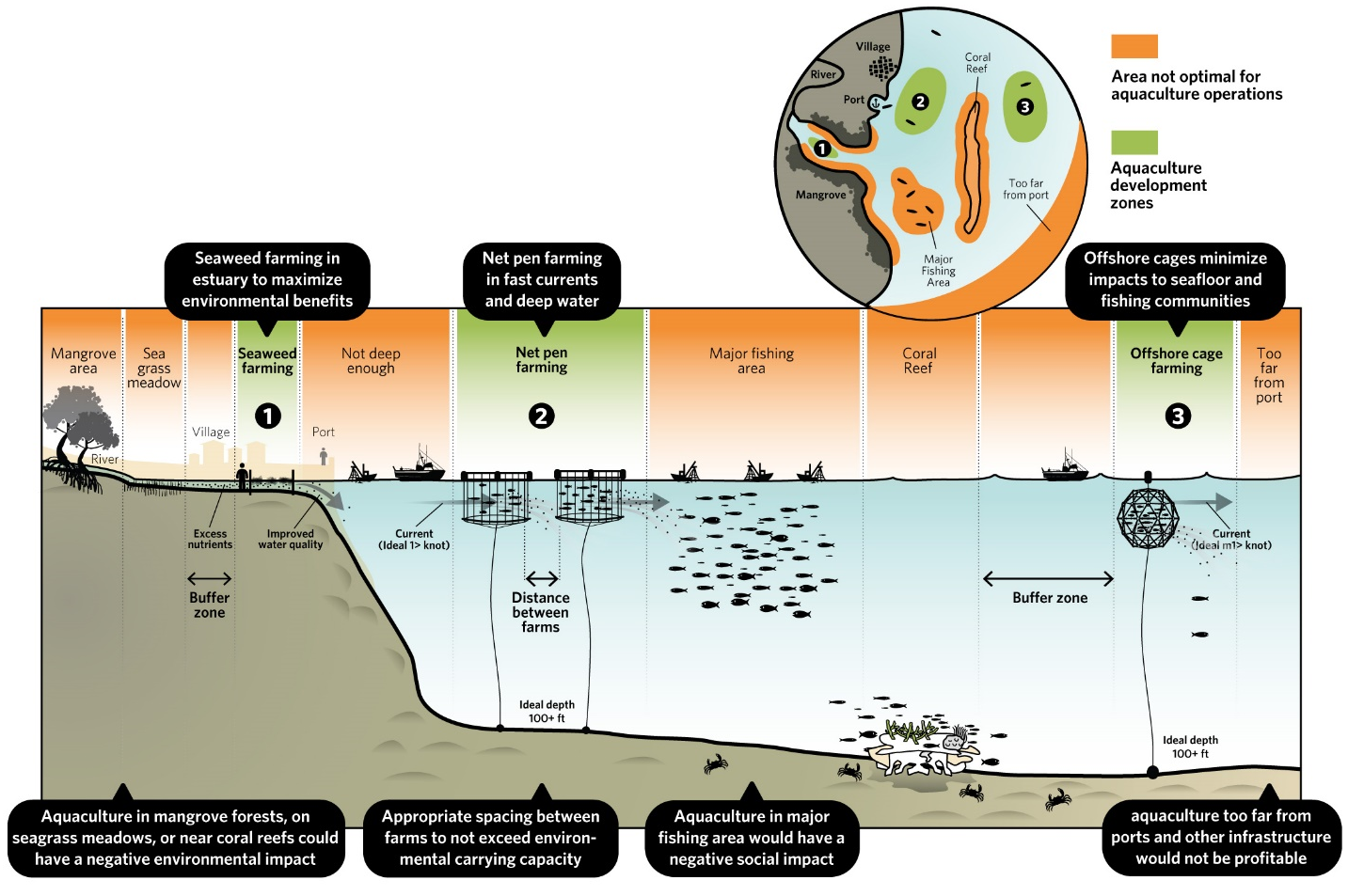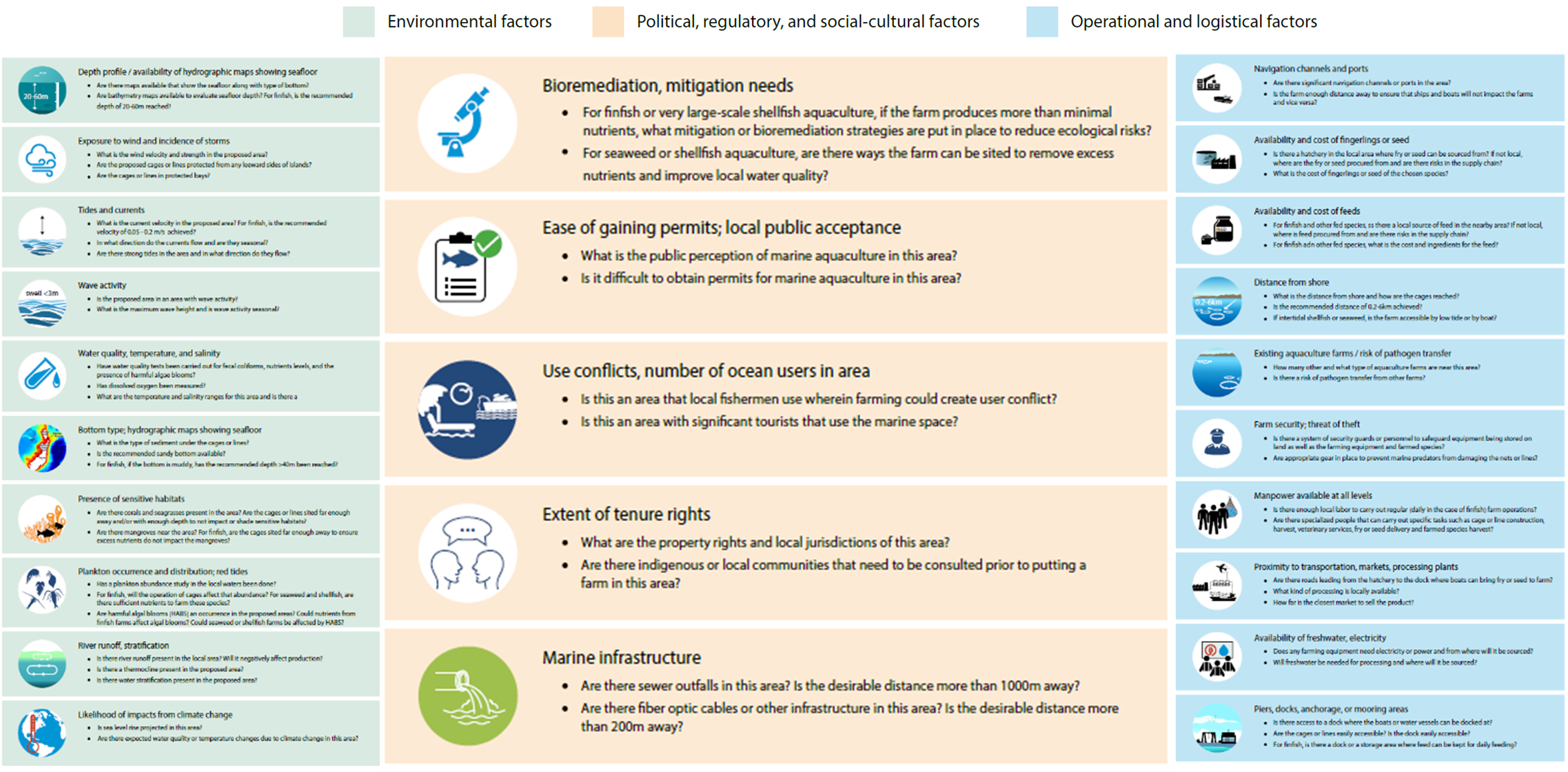Area Management Approaches
In addition to regulations to support sustainable management, marine spatial planning and ecosystem/area management approaches to aquaculture can help holistically address impacts to wild stocks, habitat impacts, water pollution, and disease. Marine spatial planning involves understanding environmental and ocean use conflicts, examining the ocean neighborhood through data, and finding space that reduces conflicts.
Below is an infographic on a landscape approach to aquaculture, showing aquaculture development zones in green and areas not optimal for aquaculture operations in orange. Finfish aquaculture should be sited away from sensitive mangrove and coral reef habitats and in deeper water to maximize currents and flow, reducing use area conflicts with fishing, tourism, and other industries.

A landscape approach to aquaculture, showing aquaculture development zones in green and areas not optimal for aquaculture operations in orange. Image © The Nature Conservancy
In using an ecosystem or area management approach, the permitting and management of aquaculture shifts from a case-by-case permitting basis to a more holistic ecosystem approach. This approach focuses on identifying potential aquaculture development zones where aquaculture development could occur. Ultimately, the process leads to siting of aquaculture farms in areas that are environmentally and economically sustainable.
Not all coastal areas can host aquaculture farms due to shallow water depth, minimal currents, sensitive habitats, or presence of other industries. Economic factors that affect day to day operations of aquaculture such as distance from shore and access to vessels are also important for the daily operations. When planning to build new aquaculture farms, a list of important parameters must be checked to evaluate the suitability of potential sites.
Aquaculture Site Selection Checklist
Environmental, political, regulatory, socio-cultural, operational, and logistical factors to consider during finfish aquaculture siting are included in the Aquaculture Site Selection Checklist. Download the checklist.

